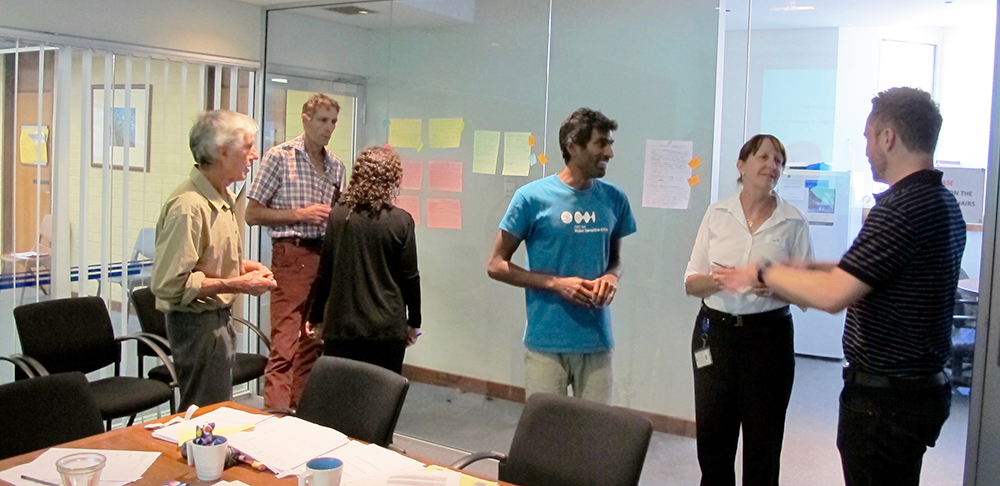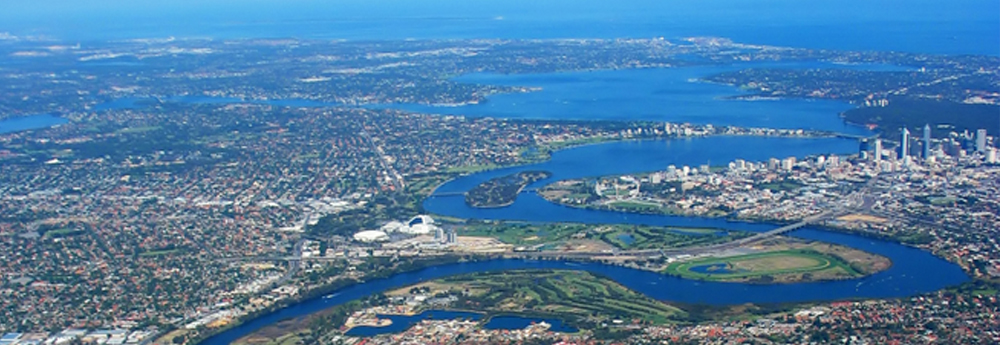A framework for urban wetland management in the Water Sensitive City
The shared problem
Located in the highly biodiverse region of southwest Western Australia, Perth’s wetland ecosystems are highly valuable. But they have also been noticeably impacted by climate change; around Perth, an estimated 85% of wetlands have already been lost. And together with a drying climate, increasing urbanisation – by altering hydrology – poses threats to the ecological integrity of those wetlands that remain.
How to manage such impacts? The key challenge for decision makers lies in adapting to a drier regime: no easy task because any actions must accommodate uncertainty in predicting climate change and ecological responses to changing hydrology.
In response, an interdisciplinary workshop was held in late 2016 at the University of Western Australia in Perth. The event saw the Department of Parks and Wildlife, the City of Armadale, the Department of Water, and the Friends of Forrestdale Community group work together with scientists to visualise objectives, thresholds, and measures to adapt wetland management to a drying climate. To illustrate our case, we used Lake Forrestdale: a large regional wetland listed internationally as a Ramsar wetland, and at an Australian level, as a wetland of great national importance.

Applying the adaptation tipping points approach
The question for decision makers is often when and how to adapt to uncertain effects on an ecosystem’s ecology. To elucidate potential answers, the Perth workshop introduced a step-by-step approach for identifying management that aims to increase resilience to droughts. These adaption tipping points approach show what to do when the magnitude of change in a system reaches the point where the current strategy is no longer effective. But how can stakeholders actively plan for wetland management given the complicated policies and differing practices of institutions across scales and at different levels? What role can governments play in long-term planning of water systems, and in identifying solutions in the short term?
Drawing on Western Australia’s Lake Forrestdale as a case study, participants were asked to develop their ideas on key objectives and performance thresholds; examples included drought duration and ecological impact, and tolerability thresholds for ecological communities. Stakeholders were also asked to develop additional actions required to reach the objectives defined for wetland management.

Participant discussion and alternative interventions
The outcome was a constructive, feasible way to adapt wetland management strategies, based on careful analysis of the past and present to build a stronger understanding of how wetlands respond to climate change. In this case study, stakeholders agreed on the common problem: sustaining Lake Forrestdale’s key ecological features. A critical reflection among the participants highlighted that for still-remaining ecosystem functions, stakeholders need to share and discuss alternative actions, not only to fulfil ecological objectives, but also to help ensure that state and local institutions can execute their responsibilities.
Stakeholders identified constraints and chances for local adaptation across different scales and levels of governance. While additional actions are needed to reach the defined objectives, the question of which institution is responsible for implementing and executing proposed adaptation measures remained open. However, all participants agreed that the aim of sustaining acceptable groundwater and surface water levels in the wetland would provide a common focus for all participating institutions involved with managing Lake Forrestdale.
Science–policy interface across scales
Bridging the science–policy gap by engaging institutions and community provides an effective way to determine objectives and thresholds for ecosystem services. The adaptation tipping point methodology is useful for addressing weaknesses in current policy and management practices; here, research findings provided a successful means of communicating to stakeholders the need for interventions. The need for water systems management to become more collaborative, adaptive, and responsive to local conditions and liveability aspirations is crucial to conserve ecosystems.
As for next research steps, the proposed measures for water quantity management will be further investigated to develop adaptation strategies. Investigations will consider:
- using maximum water allocation limits
- using a dry climate scenario
- future land-use change in the catchment area
- the change of threshold levels.
A coupled surface–groundwater model will be used that has been previously applied to the Southern River Catchment area.
The workshop contributed to exploring the constraints and possibilities in legislation, policies, and intra-agency cooperation. To better understand how certain measures can be implemented, research will provide a conceptualisation of these processes across scales and levels of governance.
In the next stakeholder workshop, adaptation options will be presented and the final set of measures for local adaptation to climate change will be discussed.

The author
Amar Nanda is a PhD student at The University of Western Australia. He has experience in the science–policy interface for urban soil and water management in the Netherlands. In the Cooperative Research Centre for Water Sensitive Cities (CRCWSC), Amar works in Program B4.2 on Flood Adaptation and the adaptation of wetland management under climate change.
The context
The CRCWSC has been working with its partners in Western Australia to develop novel scenario assessment and decision support tools that help to address the complexity of managing water in a world faced with increasing population growth, changing land use patterns, increasing climate variability, and a tightening economic environment.
For more information on adaptation tipping points: https://watersensitivecities.org.au/content/extended-atp-approach-to-include-the-four-domains-of-flood-risk-management/